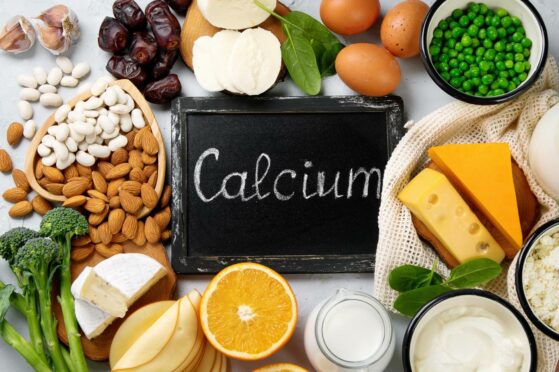Osteoporosis, or brittle bones disease, affects an estimated 200 million people worldwide.
The disease weakens the bones meaning they fracture more easily, but because the condition develops over several years, many people don’t realise they have osteoporosis until the first break occurs.
Breakages can occur all over the body, but they are most common in the wrists, hips and spine.
As we age, we naturally lose bone density, and while osteoporosis is a condition that can affect both men and women, it’s around four times more common in women, and most common in women who have been through menopause. This is because women can lose bone density as a result of falling oestrogen levels.
As well as menopause, other risk factors include the long-term use of corticosteroids to treat arthritis and asthma, thyroid conditions that can have an effect on the amount of calcium in the blood and bone, and low levels of bone-supportive nutrients such as calcium, vitamin D and magnesium.
Having low body weight is also a risk factor – there is less bone tissue throughout the body and so breakages can become more frequent.
Certain lifestyle choices, such as smoking and regularly drinking alcohol, can also make you more predisposed to developing osteoporosis, as can a family history of osteoporosis – although why this is, is still not clear.
From following a healthy diet to bone-strengthening exercises and regular bone-density scans, there’s plenty you can do to support your bone health.
A healthy diet really can help. Vegetarian and vegan diets are associated with a lower risk of osteoporosis, in part because they are less acidic than diets rich in animal protein. Try switching to a plant-based diet or reducing your intake of animal protein. You should also cut down on highly processed and sugary foods as too much sugar can cause more calcium to be secreted through the urine.
Certain nutrients can also help. Vitamins C and K are crucial for healthy bones. Food sources of vitamin C include citrus fruits and berries, strawberries are great, and vegetables such as broccoli, asparagus and potatoes, and food sources of vitamin K include cauliflower, sprouts, spinach and olive or soya bean oil.
Then there’s calcium. It’s the most abundant mineral in the body, and with 99% found in bones and teeth, it is hugely important in the fight against osteoporosis. Try to eat four servings of calcium-rich foods a day.
In additional to dairy products such as yoghurt, skimmed milk and cheese, which some people can find hard to digest, spinach, broccoli, beans, peas, sardines and pilchards are also excellent calcium providers, and they contain heaps of magnesium, which is important for calcium absorption.
Silica, from the element silicon, is also understood to play an important role in bone health, as is Urtica or stinging nettle. Not a fan of nettle soup? Try A.Vogel’s Urticalcin. It contains Urtica, calcium and silica, and may be especially useful where there is a lack of calcium absorption. It can also be taken alongside calcium supplements.
Exercise can also help, especially high-impact exercise, such as jogging, power walking and step aerobics, as can strength-training exercises such as jumps, weights, sit-ups and back strengthening exercises. It doesn’t have to be anything too strenuous – 20 minutes of walking daily is a great place to start.
Finally, do schedule in regular bone-density scans, especially if there is a history of osteoporosis in your family. Often referred to as a DEXA scan, they use low-dose X-rays to see how dense or strong your bones are. Talk to your GP or healthcare provider about organising a scan if you think you might be at risk.
For further information on osteoporosis, ask in store at Grampian Health Store, 34 Market Street, Aberdeen, or call 01224 590886. If you’re unable to get out and about, home delivery is also available.


